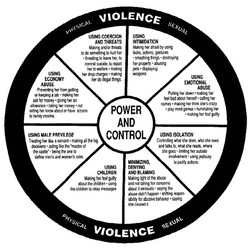
This is Domestic Violence Awareness Month and there is an increased focus on the issues of domestic violence.
What is domestic violence? The Power and Control wheel on the left breaks down many different types of abuse.
Have you been a victim of any of these kinds of abuse? As you can see, abuse ranges from economic abuse to isolation. From emotional abuse to male privilege.
Have you ever had something thrown at you? Been belittled? Have been called names? All of this is abuse.
Who makes the decisions in the relationship? Is it only your partner? Has he ever threatened to commit suicide if you’ve said you’re leaving him? All of this is abuse.
Have you been slapped, hit, pushed, or punched? Have there been threats made about him taking away your children? This is abuse.
If you have been abused, talk about it. Go into counseling. Give yourself time to heal. If you are being abused right now, find a local domestic violence organization and seek help. Talk to someone. Use your heightened awareness to do what it takes to get safe and healthy.
We hear about the most extreme cases of domestic violence in the media, but every day people are experiencing abuse. We shouldn’t minimize any form of abuse. It is all damaging to the soul.
What is your story? You have a right to be heard. Your story matters.
If you’d like to share your story, please post a comment or email me at [email protected].
Remember, if we can help just one woman, we’ve done our job.
Katelin Maloney
 RSS Feed
RSS Feed
